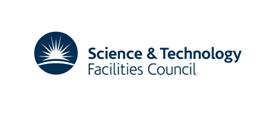- View more resources from this publisher
 Science and Technology Facilities Council - UKRI
Science and Technology Facilities Council - UKRI
Science and Technology Facilities Council
The Science and Technology Facilities Council (STFC) was formed in April 2007 by merging the Particle Physics & Astronomy Research Council and the Council for the Central Laboratory of the Research Councils.
STFC aims to encourage public engagement with science and technology and the Science in Society Programme provides enrichment activities and support for schools. This collection includes teaching and learning resources linked to the National Curriculum and Post-16 courses.
STFC also:
•funds the best research within in astronomy and nuclear and particle physics;
•enables the research community to have access to the best facilities in the world;
•provides leadership and leverage in the development and implementation of strategies for large facilities;
•increases the UK technology capability, engagement with industry and knowledge transfer.
The Science and Technology Facilities Council undertakes research at two principal sites: the Daresbury and Harwell Science and Innovation Campuses. Harwell is home to ISIS, the world's most powerful pulsed neutron and muon source - used to study the atomic structure of materials; Vulcan, the world's highest intensity focused laser; and the Diamond synchrotron, in which the Science and Technology Facilities Council has a large share. The Cockcroft Institute at Daresbury leads the way in designing the next generation of particle-accelerators.
Seeing Science is a set of resources devised by education professionals for STFC and provides a wide range of activities for teachers to use with their Key Stage Three and Key Stage Four students. The resources are arranged in six themes: Life, Space, Materials, Food, Environment and Light. The Key Stage Four resources are particularly aimed at supporting the 'How Science Works' part of the science curriculum.
Resources
Filter
In this section of STFC's Seeing Science, two lessons allow students to explore how scientists work to control the outbreak of a disease. Can anthrax, a deadly disease lead to a cure for cancer? Early results using powerful x-rays produced in a particle accelerator known as a synchrotron suggest that it might....
In this resource from STFC, students investigate the cutting edge research techniques which are being applied to food science. Powerful x-rays, produced in a particle accelerator known as a synchrotron, are being used to discover what happens at an atomic level when chocolate is made and what changes take place as...
The Science and Technology Facilities Council (STFC) is an independent, non-departmental public body. It is a science-driven organisation, making it possible for a broad range of scientists to do the highest quality research tackling some of the most fundamental scientific questions. This collection contains...
These learning materials describe ISIS, a particle accelerator facility at the Rutherford Appleton Laboratory. Produced by the Science and Technology Facilities Council (STFC), these resources will help students to:
* Improve their understanding of atoms, molecules, neutrons and muons
* Find out about...





